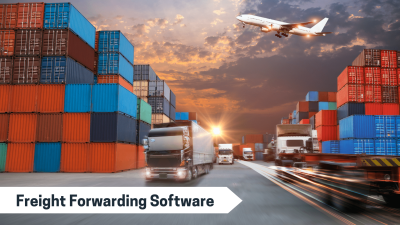The global supply chain is an important part of worldwide commerce, and the center point of its success is the underlying logistics involved in sending, receiving, moving, and stocking goods. This is one of the reasons why both the terms ‘supply chain’ and ‘logistics’ have become conflated and get confused with each other. Though some individuals and companies use the words interchangeably, there are many differences between their functions, inputs, capabilities, and outputs. Not to mention, one has to use different software for them, that is, logistics software and supply chain software.
The basic difference that can help in understanding both of their differences is that supply chains are responsible for complete sourcing, processing, and delivery of goods to the final customer, whereas, on the other hand, logistics particularly focuses on moving and stocking goods between different supply chain companies.
Keep reading to understand the details of the key differences between logistics and the supply chain:
Logistics is a Division of the Supply Chain
According to the Council of Supply Chain Management Professionals, logistics is an important part of the supply chain procedure that plans, applies, and manages the efficient forward and reverse flow and storage of goods, services, and information between the beginning point and the end-point to meet customer’s needs.”
Logistics is an Important Part of the End-to-End Supply Chain Procedure
The biggest difference is that logistics is an individual part of the supply chain which is important to improve the supply chain performance. A supply chain might have several different kinds of logistics and logistics businesses within it, that are all dedicated to helping the supply chain work as smoothly as possible. But, each logistics operation is only responsible for a different and self-contained part of the supply chain.
Logistics Plans, Implements, and Controls
Logistics providers are responsible for certain parts of the supply chain, including:
Planning how to move packages from one place to another, store them, and create the proper information and documents for effective reporting and processing
Applying the movement and storage of packages using various kinds of transport and arranging for short and long-term storage
Managing how packages move, including fleet management, technology, shipment tracking, sharing information, and working with partnered businesses in the supply chain
Drive-up value for different supply chain partners
Logistics Moves Goods from Place to Place
Good logistics management is mainly about effective transport and storage. Logistics providers use different land, air, and ocean assets to transport packages faster and more effectively. They benefit from containerization for transporting packages between types of transportation. Also, many businesses use transportation management software to manage their logistics.
Logistics Stores Goods
After the goods reach their destination, logistics providers store them in warehouses or other facilities. They keep goods until they are required in the further step of the supply chain procedure, whether that’s another supply chain company or for delivery to an end customer.
Logistics Distributes Products to the End Customer
Some logistics companies are specialized in only distribution, that is, delivering packages to the end customer, usually known as “Last-Mile Delivery.”
Supply Chains are the Framework for Sourcing, Manufacturing, and Supplying Products
Now that you have understood what exactly is logistics, it is time to move forward and look at what the overall supply chain actually represents.
The supply chain basically represents the connections and collaborations between all the suppliers, manufacturers, wholesalers, retailers, logistics businesses, and end customers. The supply chain procedure begins when a company gets an order for a product or service and ends when that product or service is delivered successfully to the end customer.
Supply chain management is a feature that analyses and directs the manufacture, transportation, and delivery of packages and services between their origin and their final destination.
Supply Chain Management Works Across Multiple Organizations
The whole supply chain connects multiple partners to source, manufacture, store, transport, supply, and sell goods:
1. Suppliers
Create raw materials or parts that can be made into products
2. Manufacturers
Manufacture parts or products from raw materials and other inputs
3. Logistics
Move and store goods when they move around the supply chain
4. Wholesalers
Buys goods for onward distribution to stores or other sales outlets
5. Retailers
Sells final products to end customers
Supply Chain Management is Responsible for Other Areas As Well
Supply chain management also manages other aspects of the order, inventory, and supply chain procedure, like:
1. Fosters Collaboration and Partnerships
Provides links and improved ways for various supply chain companies to work together
2. Inventory Management
Understanding when the stock of certain products is falling and managing to procure new items
3. Order Management
Analyzing orders with suppliers, manufacturers, and other organizations in the supply chain
4. Order, Asset, and Shipment Tracking
Following the flow of orders, goods, and other assets with the global supply chain
5. Visibility
Reporting on the flow of products through the supply chain
6. Troubleshooting
Managing and controlling problems with the speed, quality, cost, or other aspects of goods working through the supply chain
Eventually, a good supply chain gives a competitive edge to every organization that’s involved in its procedure. The whole supply chain is responsible for marketplace success and revenues, on the other hand, logistics plays a critical, central role in making sure raw materials, parts, and finished goods flow smoothly through the global supply chain.
Reach out to us at… and get to know more click at https://www.boxonlogistics.com/request-demo/






COMMENTS